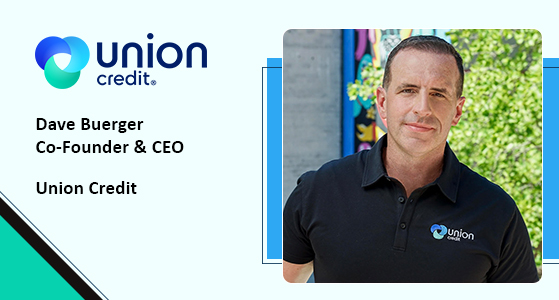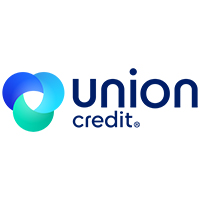
Redefining Access to Credit Unions in the Digital Age
In today’s digital-first world, accessing credit unions shouldn’t be complicated. Union Credit, led by Dave Buerger, Co-Founder & CEO, and Barry Kirby, Co-Founder & CRO, is making it seamless. In this interview with Biz Tech Outlook, they share how their plug-and-play credit union marketplace is transforming the way consumers connect with loans, memberships, and financial opportunities—instantly and effortlessly.
What inspired the founding of Union Credit, and how did the concept of a “plug- and-play credit union marketplace” evolve?
Union Credit was founded with a vision to modernize how people connect with credit unions and financial opportunities. The inspiration came from the same team that created TruStage Digital Storefront (formerly CuneXus), the trailblazers behind “perpetual approval” lending. With CuneXus, credit unions could present members with personalized, one-click offers, streamlining access to loans and credit products. While this was a transformative step, the founders quickly realized the potential to extend that innovation beyond existing members and into the digital environments where consumers already spend their time.
This insight led to the creation of Union Credit as a “plug-and-play credit union marketplace.” The idea was to make credit unions more accessible by embedding their offerings directly into everyday digital channels, whether someone is shopping online, comparing financing options, or making key financial decisions. By removing the barriers of lengthy technology integrations, Union Credit allows credit unions to appear instantly at the point of need, creating a seamless experience for both institutions and consumers. The result is a powerful new way to connect people with community-driven financial solutions at the exact moment they matter most.
What specific challenges were credit unions facing that Union Credit aims to resolve?
Credit unions have long played an essential role in serving local communities, but in today’s digital economy, they face two persistent challenges: an aging membership base and outdated lending processes. Younger generations, particularly Gen Z, make up nearly 40% of the U.S. population, yet only about 4% of them are members of credit unions. This gap highlights a pressing need to reach and engage digital-first consumers who expect speed, simplicity, and transparency in their financial interactions.
Traditional lending journeys, often characterized by long forms, preapprovals that expire, and paper-driven workflows no longer align with modern expectations. These friction points discourage new members and make it difficult for credit unions to compete with large, tech-driven financial institutions. Union Credit was created to bridge this divide by transforming how credit unions connect with consumers.
By embedding firm, one-click offers into digital spaces like publisher websites, merchant platforms, and financial apps, Union Credit places credit unions directly where consumers are already active. This seamless experience allows individuals to accept an offer instantly, while simultaneously becoming members of the issuing credit union. In doing so, Union Credit empowers credit unions to grow younger membership while modernizing the lending experience.
Could you explain how your integration with CuneXus and MeridianLink streamlines the onboarding process for credit unions?
Union Credit was designed to make adoption as seamless as possible for credit unions, and our integrations with TruStage Digital Storefront (formerly CuneXus) and MeridianLink are central to that mission. Today, hundreds of credit unions already rely on the Digital Storefront to power lending automation. Because of this existing foundation, those institutions can join Union Credit with virtually no heavy lifting, often it’s as simple as opting in rather than rebuilding processes or investing in lengthy IT projects. This gives credit unions an immediate way to extend their lending strategies into new digital marketplaces with minimal disruption.
MeridianLink enhances this experience on the loan origination side by addressing what we call “memberization.” Traditionally, when a non-member accepts a credit union offer, the process can be slowed down by separate membership applications, account openings, and manual steps. Our integration with MeridianLink removes those barriers by automatically converting accepted offers into fully funded loans while simultaneously onboarding the consumer as a member. The result is a streamlined, one-click journey that transforms prospects into engaged members instantly. Together, these integrations reduce friction, speed time to value, and allow credit unions to expand their reach with confidence.
What’s the cost for a credit union to participate in the marketplace, and how quickly can loan offers go live?
One of the most attractive aspects of Union Credit’s marketplace is its cost structure. Participation is completely free, there are no upfront investments, recurring subscription fees, or hidden charges for credit unions to join. Instead, the model is performance-based, ensuring that institutions only pay when they see tangible results. A one-time lead generation fee is applied only when a consumer actively selects a credit union’s product and completes the process to redeem the offer. This “pay-for-performance” approach ensures credit unions are investing in measurable growth, rather than speculative marketing expenses.
Equally important is the speed to market. Many financial technology projects require months, sometimes years, of integration and testing before going live. Union Credit was designed to remove those barriers and deliver value quickly. Once a credit union signs on, the average time to launch is just two to four weeks. This rapid turnaround allows institutions to expand their digital footprint almost immediately, connecting with new members and embedding their offers directly into digital environments where consumers are already making financial decisions. The result is a cost-effective, fast, and scalable pathway for credit unions to grow.
What would the perfect future look like for Union Credit in 2030?
By 2030, Union Credit envisions becoming the central distribution hub for credit union products, much like how Amazon transformed accessibility for small retailers. In this future, the traditional concept of “joining” a credit union will feel outdated. Instead, consumers will simply accept a digital offer, and all the behind-the-scenes steps, membership enrollment, account creation, and loan funding will occur instantly and seamlessly in the background.
This shift would make credit unions as easy to access as any modern fintech app, removing friction without compromising the values that make them unique. Consumers would experience the speed and convenience they expect in today’s digital world, while still benefiting from the trust, community-driven ethos, and member-first approach that credit unions have upheld for decades.
The ultimate goal is a financial landscape where credit unions are no longer perceived as niche or difficult to access but as mainstream, competitive, and ever-present in consumers’ daily financial journeys. By embedding themselves directly into digital ecosystems, credit unions can extend their reach to new generations and ensure long-term relevance. For Union Credit, 2030 is about scaling impact, deepening access, and positioning credit unions as leaders in consumer finance.
What is your current market coverage in the U.S., and how does that align with your target footprint and expansion strategy?
As of early 2025, Union Credit has established a strong national presence with more than 50 credit unions live on the platform. Collectively, these institutions have already delivered impressive results, driving over 35,000 new members and originating more than $500 million in consumer loans. This demonstrates both the scalability of the model and its ability to create real, measurable growth for participating credit unions.
On the demand side, Union Credit’s reach extends through partnerships with major national publishers and platforms, including Experian, Way.com, Bankrate, LendingTree, and QuinStreet. These integrations ensure that credit union offers are seamlessly embedded into the digital spaces where consumers are already researching, shopping, and making financial choices. By meeting people at their point of need, Union Credit is positioning credit unions to compete head-to-head with big banks and fintechs.
Looking ahead, the expansion strategy is clear: continue to grow the supply side by onboarding more credit unions, while also building additional publisher and merchant partnerships to increase visibility among younger, digital-first consumers. With coverage across all 50 states, Union Credit has the reach and infrastructure to engage virtually every creditworthy consumer in the U.S.
Tell us about the founders and any other members of the leadership team.
Union Credit is led by industry veterans who have spent their careers reshaping how credit unions deliver lending products and engage with their members.
Dave Buerger, Co-Founder and CEO – Previously co-founded CuneXus and served as its CEO for 15 years, pioneering one-click lending in the credit union space.

Barry Kirby, Co-Founder and CRO – Also a CuneXus veteran, Barry earlier built a loan origination system that was ultimately acquired by MeridianLink. His experience in both LOS development and credit union growth strategy positions him as the go-to-market driver at Union Credit.

The advisory board includes Darrell Esch, former GM of Venmo at PayPal, and Scott Hansen, former CMO of Vericast as well as many other highly skilled credit union advocates that help shepherd our desire to keep banking local.
“Seamless offers, instant membership, limitless growth”
“Connecting credit unions with consumers anytime, anywhere”


Company Name : Union Credit
Website : https://www.unioncredit.app/
Management Team
Dave Buerger | Co-Founder and CEO
Barry Kirby | Co-Founder and CRO







